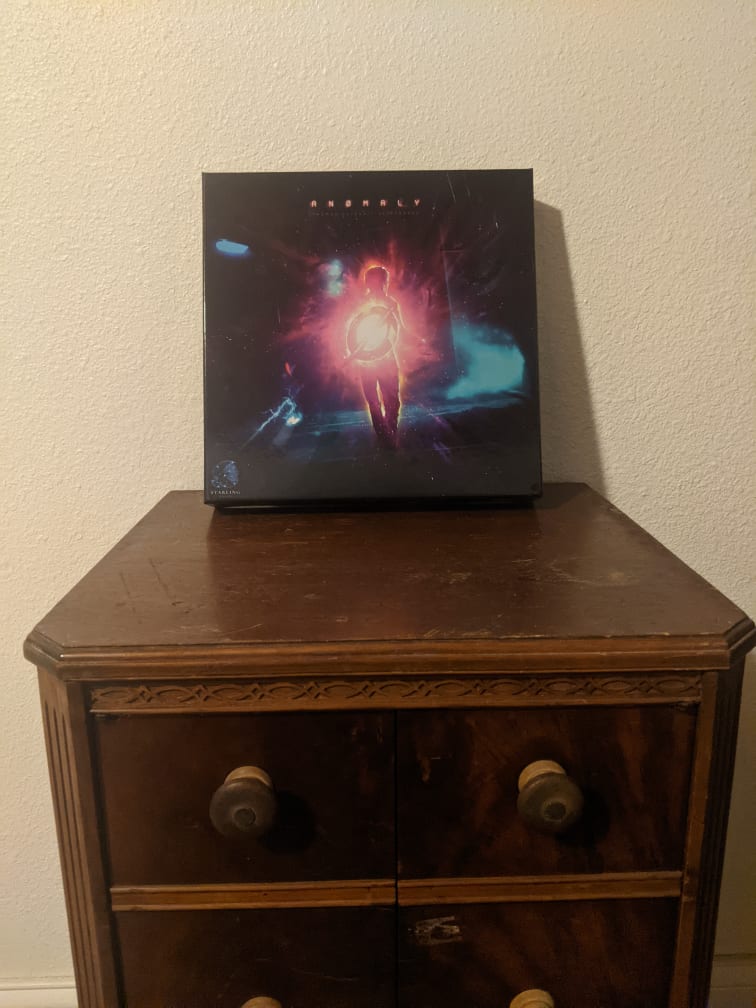Anomaly by Starling Games
-Ryan Miller
I have very little experience with deduction and hidden movement based games. I played AEG’s fantastic Ninja: Legend of the Scorpion Clan long ago when(back when L5R was still fun), but beyond that, I can’t say I have much exposure to them. I want to thank Starling Games for allowing me to play this tense and unnerving little game.
Deduction and Hidden Movement based games, for the uninitiated, typically rely on players using their wits to determine some hidden objective, be it mobile or not. In Anomaly, every player on the board is hidden from one another. Players have clues to suss out locations on a larger map containing the other players while keeping track of their own location on a much smaller map hidden behind their player screens. The game comes with 4 of these well-made mini-maps, one for each player. This is a huge improvement over the aforementioned Ninja, since it used disposable map sheets to track yourself. There is nothing disposable about this game.
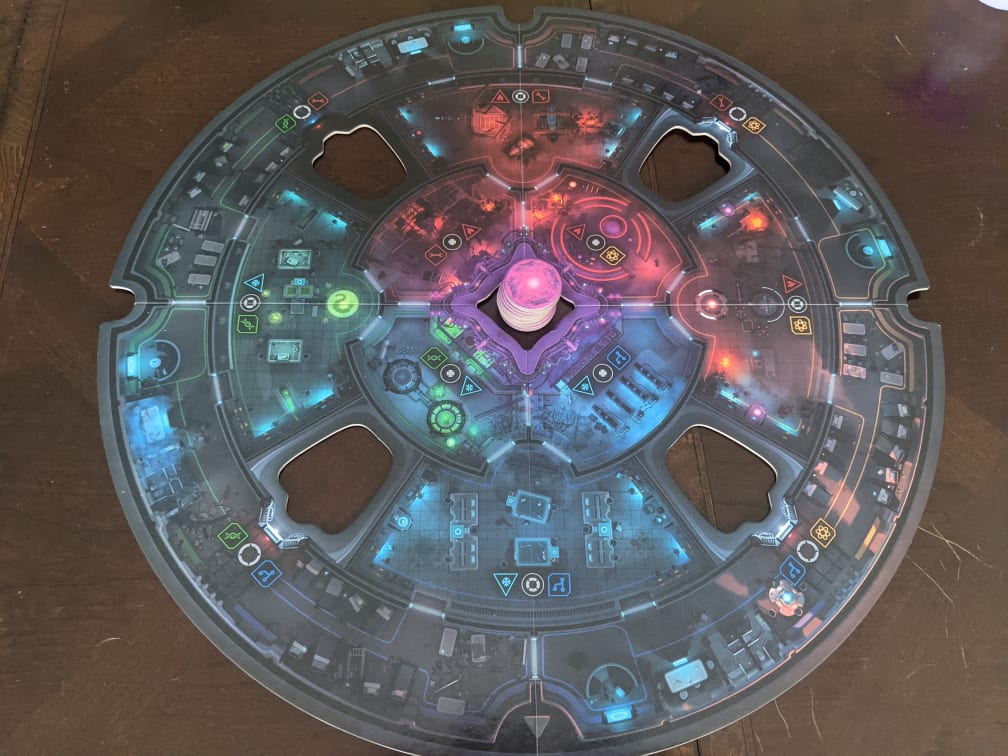
So what exactly is Anomaly about?
This four player game has players take on one of two roles. Players can be either one of the three students fighting for survival on a deep space vessel, or the blood-thirsty, electricity sucking monster hunting them down.
So how exactly do you play a game like this? If the larger map doesn’t show where everybody is, how can I find them? How do three students hope to stand a remote chance against a horrible space monster?
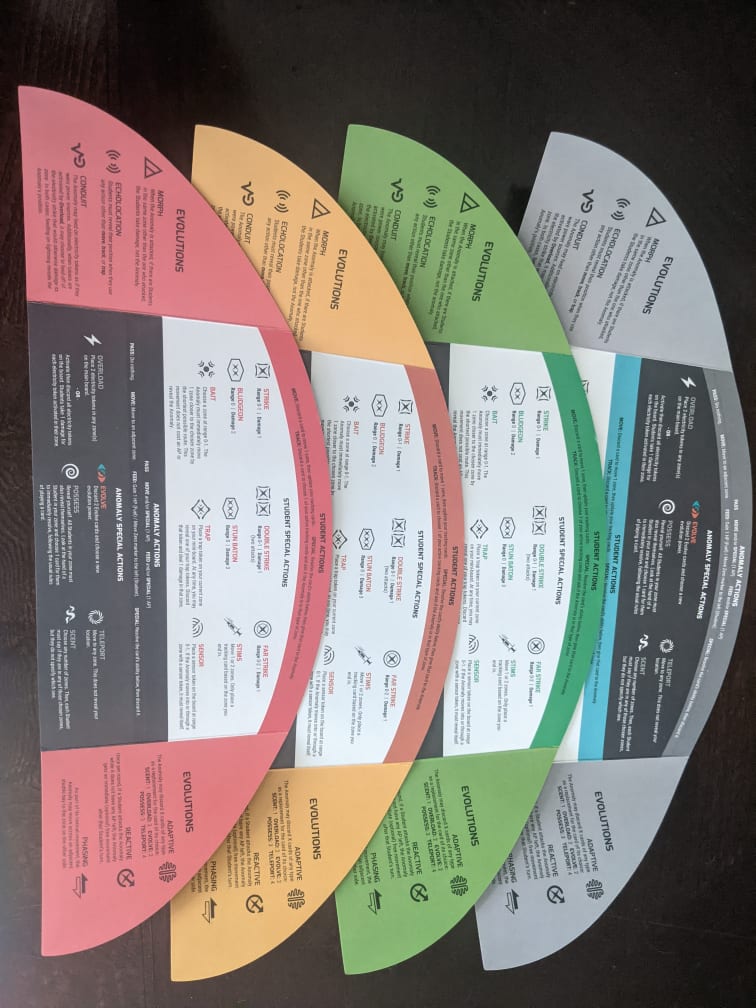
As I stated before, every player gets what is, more or less, a dungeon master’s screen to obfuscate their movements on their personal mini-map. The students and the Anomaly take turns Student, then Anomaly. There is no set order for the students. You don’t go clockwise, draw straws, or wager to determine this. You strategize as a group. However, anything you say to your fellow students must be audible to the Anomaly. There are no secret strategy meetings in this game. If you’re in a four player game, students have collectively nine cards, or three each. Cards are spent in various ways to perform actions. Once the students have collectively two cards, the round ends for the students. The Anomaly plays until they run out of their three actions. The Anomaly may also pass, strategically holding an action until later. Once the Anomaly runs out of actions and the students have collectively two cards, the round ends.
So what exactly are these basic actions?

The nine cards distributed amongst the students work in various way. Basic actions require no specific card. Students may discard a card to either move or track the Anomaly. Movement requires you to update your location, privately, but also to adjust your tracking card in front of your game screen. If you choose the tracking action, you’ll choose one of the tracking cards in front of your game screen to ask the Anomaly if they’re in a corresponding location.
Wait, what exactly is a tracking card

Each zone on the board has a set of three tracking emblems. There are nine total. A Student player typically has two tracking cards placed in front of their screen. One to show what type of zone they’re in, and one to show what type of zone they were in previously. It is using these two cards in front that you’ll ask the Anomaly if they’re in a corresponding zone. Since each zone has a mismatched set of three tracing emblems, finding one another is no easy task.
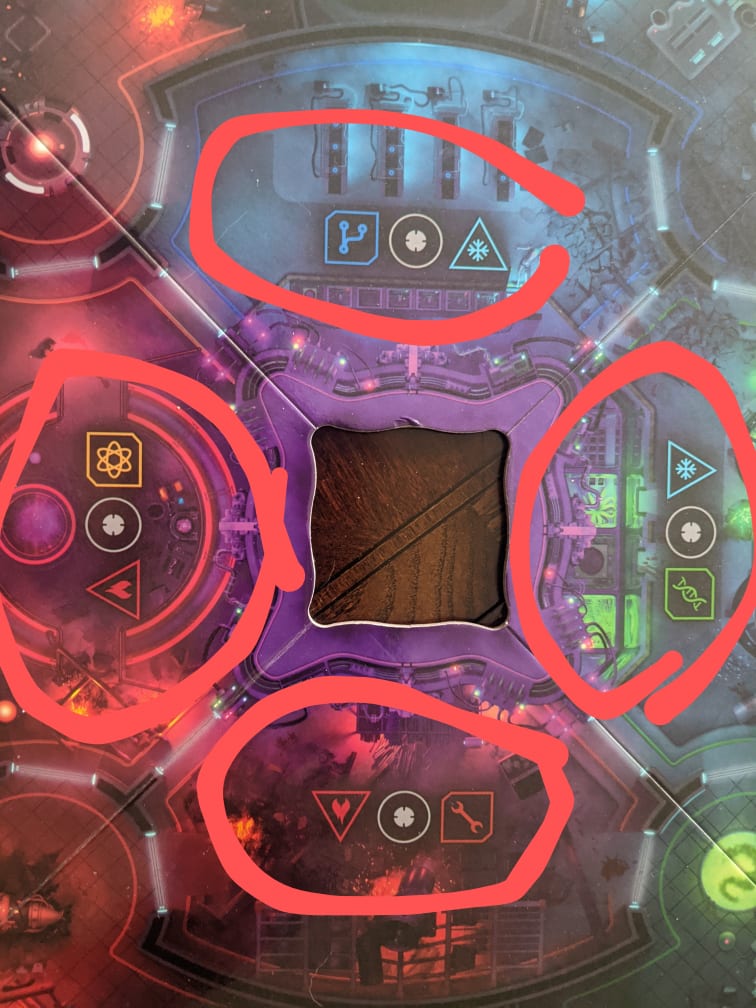
So how do the students fight this Anomaly?
Each of the students’ cards serve two functions for them. The first is the previously described basic action. The second is a specialty action. The special actions can be some way to track or attack our space monster, or enhance oneself temporarily.
Why wouldn’t you just always do a cool special action?
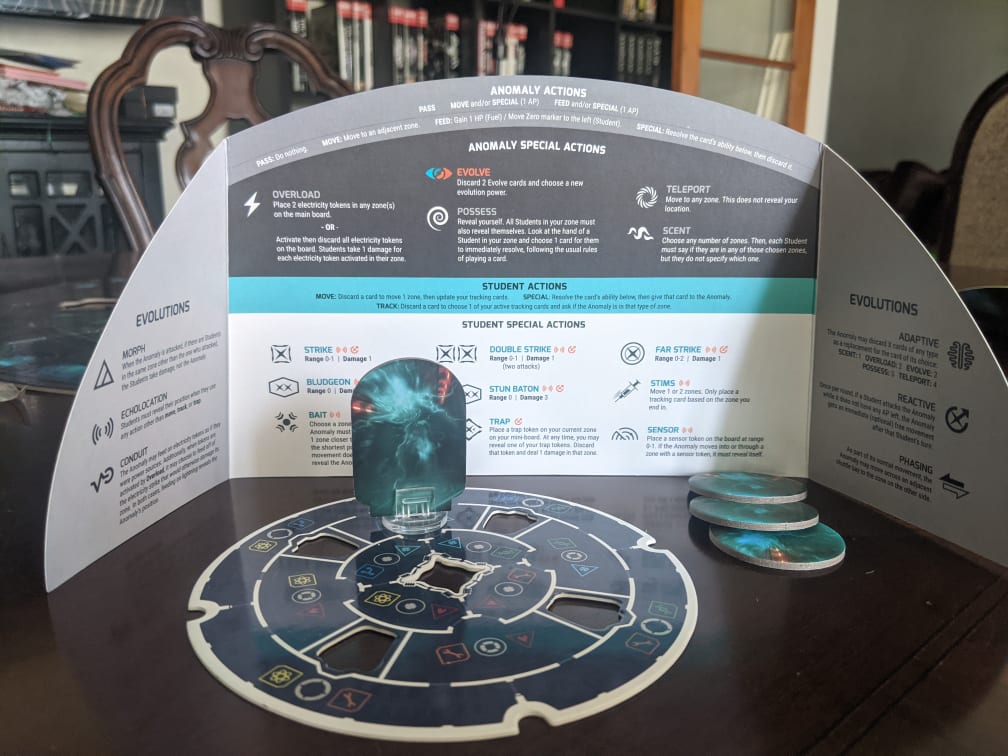
The cost of a special action is tremendous. In the case of normal actions, a student discards the card as a cost to perform. However, in the case of special actions, the student gives the Anomaly the card as cost to perform allowing them to also perform special actions.
Let’s say I’m the horrifying space creature. What can I do to eat those kids?
Though the anomaly is limited to three turns each round, you have a surprising amount of options. During each turn the Anomaly may perform the basic actions feed or move. Additionally, the creature may also play a special action, provided the foolish students have offered up enough cards to pay the cost. These special abilities enhance movement or tracking, alter the board with traps, or evolve the Anomaly to have special new passive abilities making it even more fearsome.
How do you win a game like this?
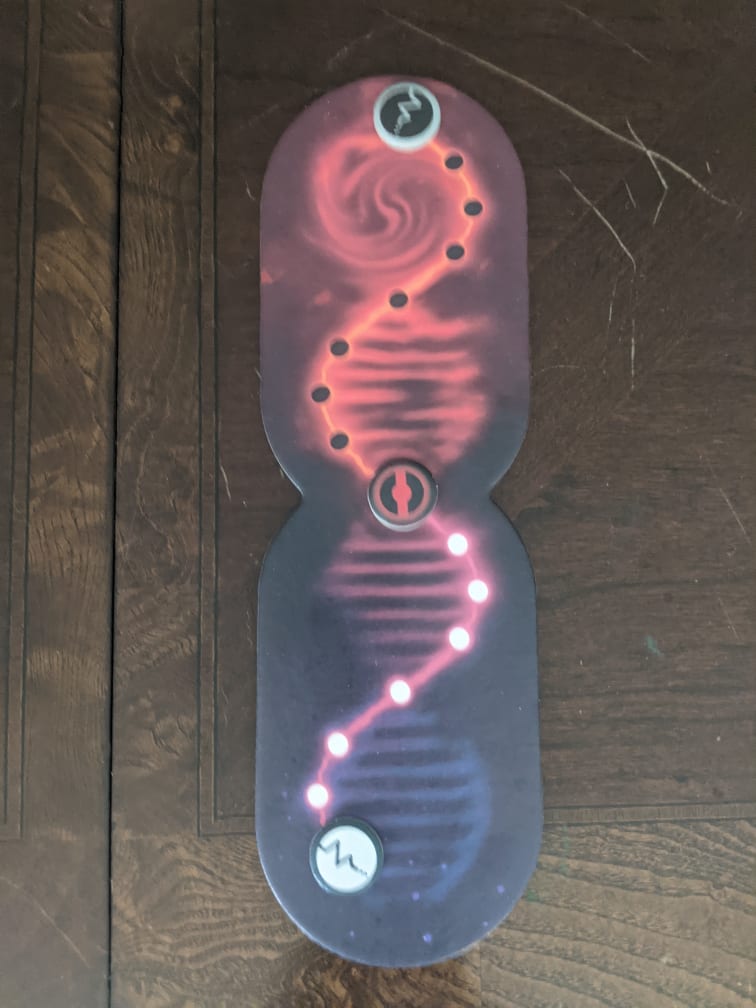
Find the enemy and kill them as fast as possible! The game continues round after round until one team is eliminated. The students share a life bar, while the Anomaly has it’s own. It’s nice that each student doesn’t have a finite life bar, which would likely ensure that at some point, a player would stop being relevant. Because of this, nobody has to sit and watch rather than play.
There are plenty of other fun facets to this game. It comes with several tracking tokens, which the rulebook encourages you to decide how best to use them. Whether you decide to use them privately, publicly, or whatever. Each round also makes the board more dangerous with radiation tokens. Pushing players to finish before the board finishes it for them.
Is there anything you don’t like about this game?
Just a few minor gripes. I do feel the game screens are too short. Some of the color combinations on said game screen make for difficult reading. That’s it. The good most certainly outweighs the bad here.
If you’re like me, Science Fiction and Horror colliding pique your interest. The game is fun, nerve-racking, and beautifully presented. If you’ve never played a hidden movement and deduction style game, this is the perfect one to try. It’s easy to learn, but offers players plenty of options. It’s a great addition to my game shelf and will likely get tons of play in the future.

